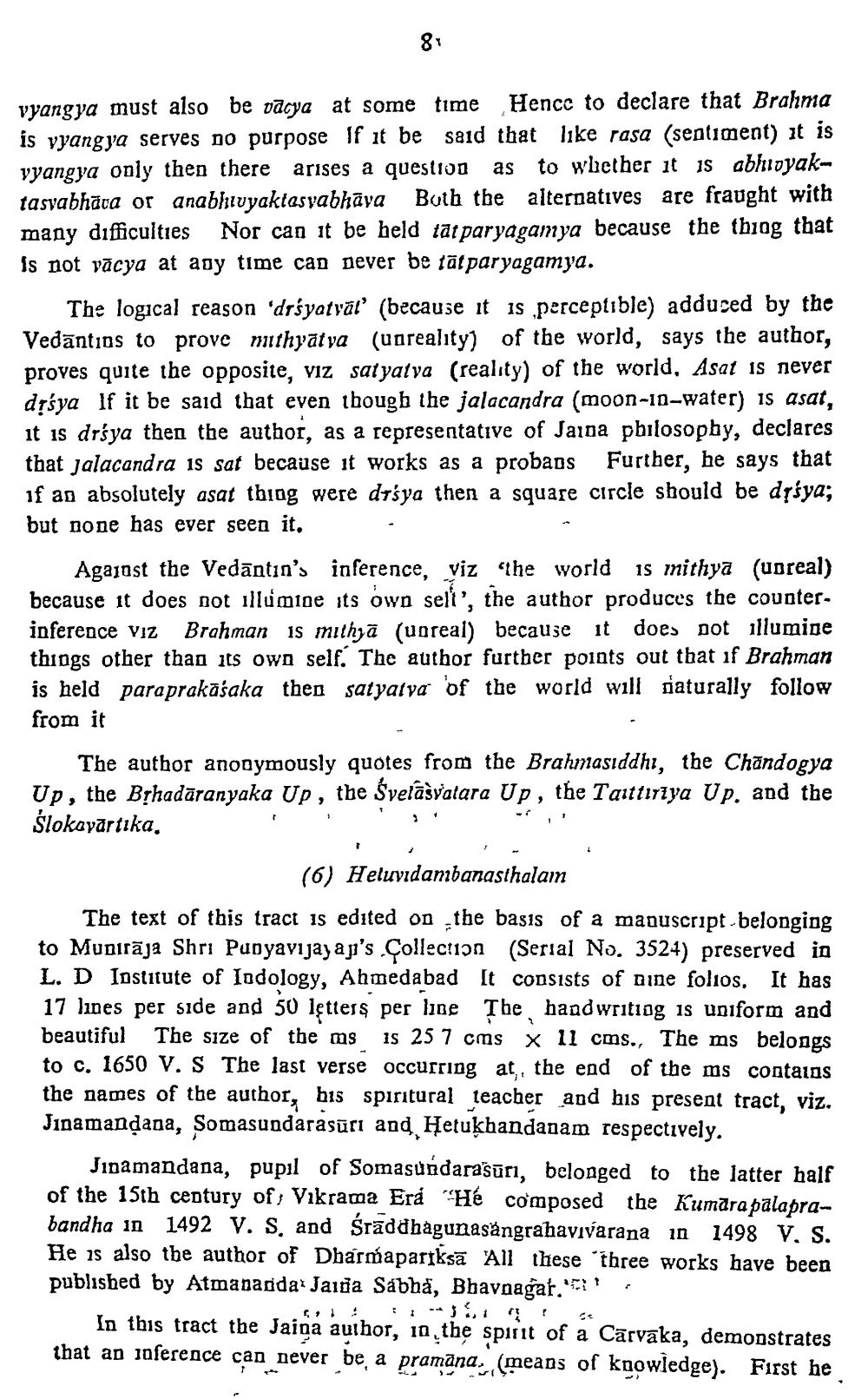________________
vyangya must also be vacya at some time Hence to declare that Brahma is vyangya serves no purpose If it be said that like rasa (sentiment) it is vyangya only then there arises a question as to whether it is abhoyaktasvabhata or anabhivyaktasyabhāya Buth the alternatives are fraught with many difficulties Nor can it be held tatparyagamya because the thing that is not vācya at any time can never be tātparyagamya.
The logical reason 'drśyatyāl (because it is perceptible) adduced by the Vedāntios to prove nithyatya (unreality) of the world, says the author, proves quite the opposite, viz satyalya (reality) of the world, Asat is never drśya If it be said that even though the jalacandra (moon-10-water) is asat, it is drśya then the author, as a representative of Jaida pbilosopby, declares that jalacandra is sat because it works as a probaos Further, he says that if an absolutely asat thing were dtsya then a square circle should be dyśya; but none has ever seen it.
Agajast the Vedāntin's inference, viz "the world is mithya (uoreal) because it does not illumine its own sell', the author produces the counterinference viz Brahman is milhjā (unreal) because it does not illumine thiogs other than its own self. The author further points out that if Brahman is held paraprakāśaka then satyalya of the world will naturally follow from it
The author anonymously quotes from the Brahmasıddhi, the Chandogya Up, the Brhadaranyaka Up, the Svelāšvalara Up, the Tarttırıya Up, and the Ślokayārtika.
(6) Heluvidambanasthalam The text of this tract is edited on the basis of a manuscript belonging to Munirāja Shri Punyavijayap's Collection (Serial No. 3524) preserved in L. D Institute of lodology, Ahmedabad It consists of dine folios. It has 17 lines per side and 50 letters per line The handwritiog is uniform and beautiful The size of the mos is 25 7 cm x 11 cms., The ms belongs to c. 1650 V. S The last verse occurring at the end of the ms contains the names of the author, bis spiritural teacher and his present tract, viz. Jinamandana, Somasundarasūri and, Hetuķhandanam respectively.
Jinamandana, pupil of Somasundaraðūri, belonged to the latter half of the 15th century of Vikrama Era "Hé composed the Kumarapalaprabandha in 1492 V. S, and sraddhagunasängrahavivarana in 1498 V, S. He is also the author of Dharmapariksā All these three works have been published by Atmananda Jaida Sabha, Bhavnagar. ???
In this tract the Jaina author, in the spirit of a Cārvaka, demonstrates that an joserence can never be a pramana. (means of knowledge). First he




